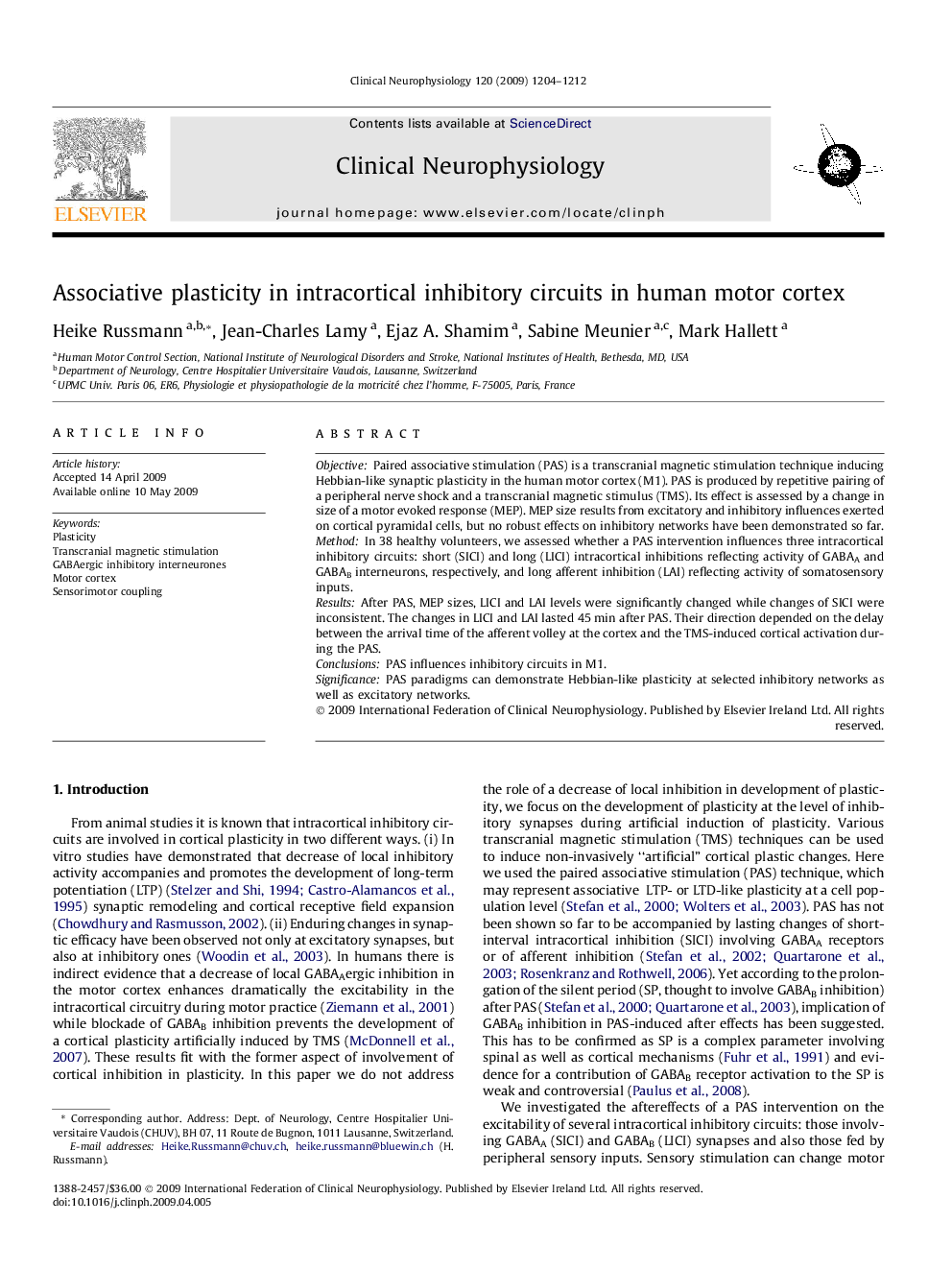| Article ID | Journal | Published Year | Pages | File Type |
|---|---|---|---|---|
| 3046544 | Clinical Neurophysiology | 2009 | 9 Pages |
ObjectivePaired associative stimulation (PAS) is a transcranial magnetic stimulation technique inducing Hebbian-like synaptic plasticity in the human motor cortex (M1). PAS is produced by repetitive pairing of a peripheral nerve shock and a transcranial magnetic stimulus (TMS). Its effect is assessed by a change in size of a motor evoked response (MEP). MEP size results from excitatory and inhibitory influences exerted on cortical pyramidal cells, but no robust effects on inhibitory networks have been demonstrated so far.MethodIn 38 healthy volunteers, we assessed whether a PAS intervention influences three intracortical inhibitory circuits: short (SICI) and long (LICI) intracortical inhibitions reflecting activity of GABAA and GABAB interneurons, respectively, and long afferent inhibition (LAI) reflecting activity of somatosensory inputs.ResultsAfter PAS, MEP sizes, LICI and LAI levels were significantly changed while changes of SICI were inconsistent. The changes in LICI and LAI lasted 45 min after PAS. Their direction depended on the delay between the arrival time of the afferent volley at the cortex and the TMS-induced cortical activation during the PAS.ConclusionsPAS influences inhibitory circuits in M1.SignificancePAS paradigms can demonstrate Hebbian-like plasticity at selected inhibitory networks as well as excitatory networks.
